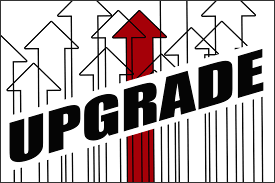By Deanna Mollett, Partner & Director of ILM Services
Where is your company on the HANA implementation spectrum? Are you planning your HANA upgrade, in the middle of a conversion to HANA S/4, or perhaps recently upgraded to Suite on HANA? In each of these HANA deployment stages, data volume management initiatives have distinct motivations and approaches. Let’s examine these differences and important data volume management steps to consider regardless of where your HANA implementation stands today:
Adaptation to HANA S/4 Simple Finance
Did you know that HANA S/4 Simple Finance has different data structures that also bring changes to archiving? Some archive objects are now obsolete, while new archive objects are available. Data dependencies among archive objects requires proper sequencing in the process. In addition to new data archiving definitions, data aging transfers (business complete) accounting documents from Hot In-Memory to Cold Disk. This is essential to controlling in-memory data volumes and costs. If the horizon includes HANA S/4 Simple Finance, instituting the archive strategy before conversion is a smart choice. Why? Less documents to convert enables shorter timelines for the project, from testing to the live conversion.

Data Volume Management is Vital to any HANA Upgrade
Mid-Project HANA Upgrade and/or Conversion
Depending on the current system version, a HANA upgrade could require a Unicode conversion on top of everything else. It’s kind of a shocker when I hear data volume management is not part of the HANA preparation roadmap. Is it budget, timeline assumptions, or something else that’s prevented data archiving from being part of the plan? Regardless, deferring discussion and action about data volume management for HANA is a costly miscalculation! Consider the consequences of converting billions of old records bearing diminished or no business value. Conversions can be very time- and resource-intensive, especially when data has never been or was sparsely archived. “Mock” conversion tests may reveal problem tables. If you find the conversion in this sort of a bind, it is possible to recover with quick and accurate volume reductions (think spot reducing) at this stage.
Just Upgraded to HANA? Not Archiving Yet? What Are You Waiting For?
In truth, “Quick Wins” and “Low Hanging Fruit” just don’t cut it anymore as a solution for keeping data growth at bay. This approach buys a little time, but it doesn’t manage risk or provide long-term cost controls. A full-circle strategy inclusive of best practices is the “new normal” for data volume management in HANA environments. Going into a new HANA environment without a clear data volume management strategy almost guarantees in-memory resources will scale out, and the next tough decision could be “when,” not “if” it is necessary to buy more space!
One final thought I’d like to leave with you today:
Data archiving is not a technical process to be led by database administrators. Compliance and stewardship connects Business Leads, Tax, and Legal with IT in forming policies and practices for SAP data–a most precious asset! Engaging an experienced advisor to help guide the process, educate the team, and support the implementation can make a huge difference in the project and, more importantly, the way forward.
Call us at 1-817-832-5319 today to discuss your organization’s HANA upgrade and how data volume management can be incorporated into the process for optimum efficiency and effectiveness.






